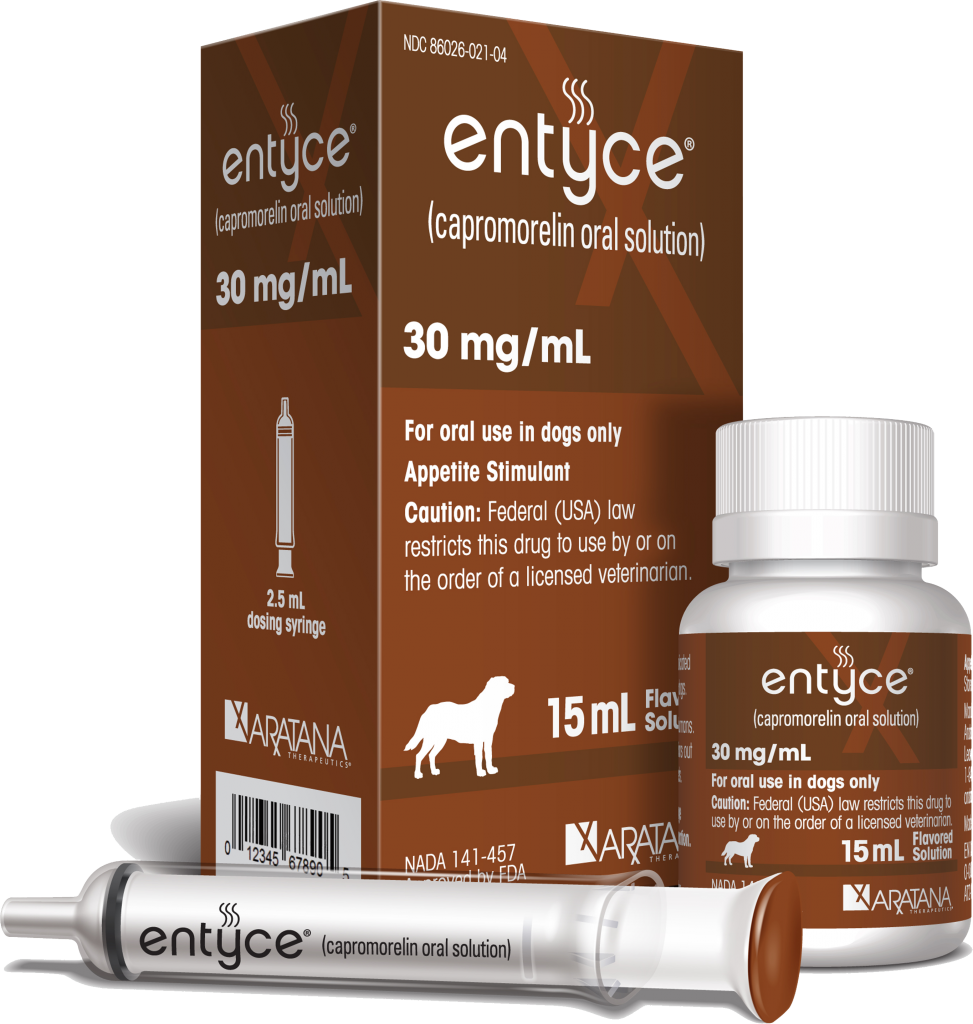Recently-FDA-approved ENTYCE® provides safe, effective appetite stimulation. Product will be available to pet owners in late-2017.

ENTYCE®
Aratana’s ENTYCE® (capromorelin oral solution), was granted FDA approval for appetite stimulation in dogs. This new therapeutic will help veterinarians manage the symptom of inappetence while working to diagnose the underlying cause. Now, with the FDA approval of ENTYCE, safe and effective appetite stimulation in dogs is possible.
More than 10 million dogs in the United States present annually to their veterinarian with the symptom of inappetence.1 The prolonged negative physiologic effects of inappetence in dogs are well documented and can lead to serious metabolic derangements.2 In addition, inappetence can represent a major negative perception of the quality of life to the caregiver, which may be especially distressful and is often perceived as evidence of suffering.
There are generally two causes of inappetence:
- Pseudoinappetence, which may occur due to dental disease, unpalatable food or food aversions
- True inappetence, which may be caused by one or more conditions, such as, but not limited to a systemic disease (e.g. renal disease, cancer), pain, nausea, medications, respiratory distress, neurologic disease or congestive heart failure.
What is ENTYCE?
ENTYCE® (capromorelin oral solution) is a flavored, liquid prescription product administered orally using the provided syringe. As a selective ghrelin receptor agonist, it mimics ghrelin, the naturally-occurring “hunger hormone” and a peptide produced in the stomach that is integral to the regulation of food intake. Ghrelin binds to receptors in the hypothalamus, initiating signaling cascades to trigger appetite.4
Aratana intends to commercially launch ENTYCE by late-2017. Learn more about inappetence and download clinical research findings in the Aratana Library.
For more information on this product speak with your veterinarian and visit Aratana’s website.
1Data on file.
2 Hershey AE, et al. “Quality of Life Assessment in the Veterinary Cancer Patient”. Veterinary Comparative Oncology Group, a division of Veterinary Cancer Society. http://www.vetcancersociety.org/members/cooperative-oncology-group/ 10 March 2016
3Ettinger, S.J. (2010). Chapter 41 (Anorexia) in the Textbook of Veterinary Internal Medicine, 7th ed. St. Louis, MO. Saunders Elsevier.
4ENTYCE® (capromorelin oral solution) Package Insert. Leawood, KS: Aratana Therapeutics, 2016.

